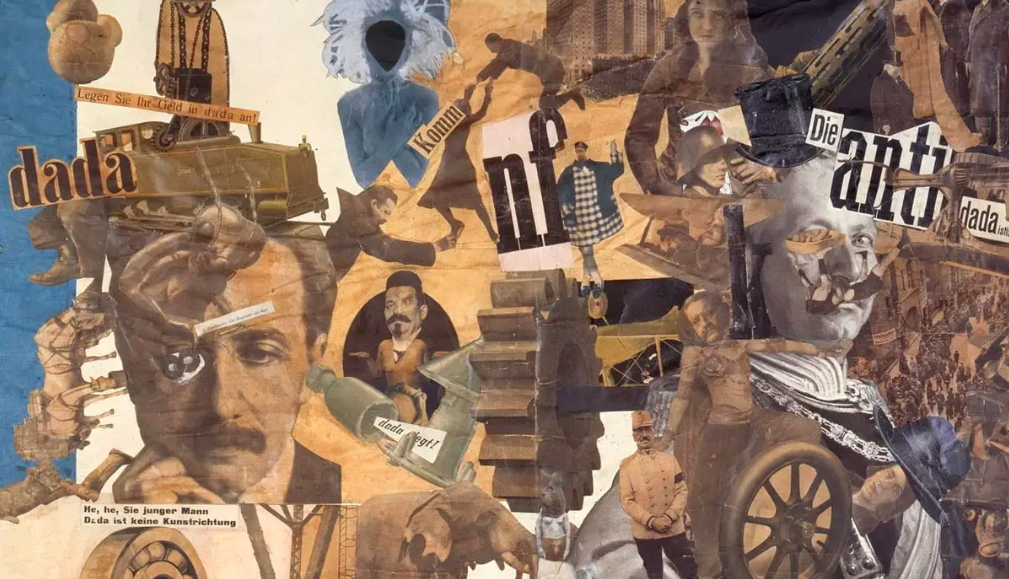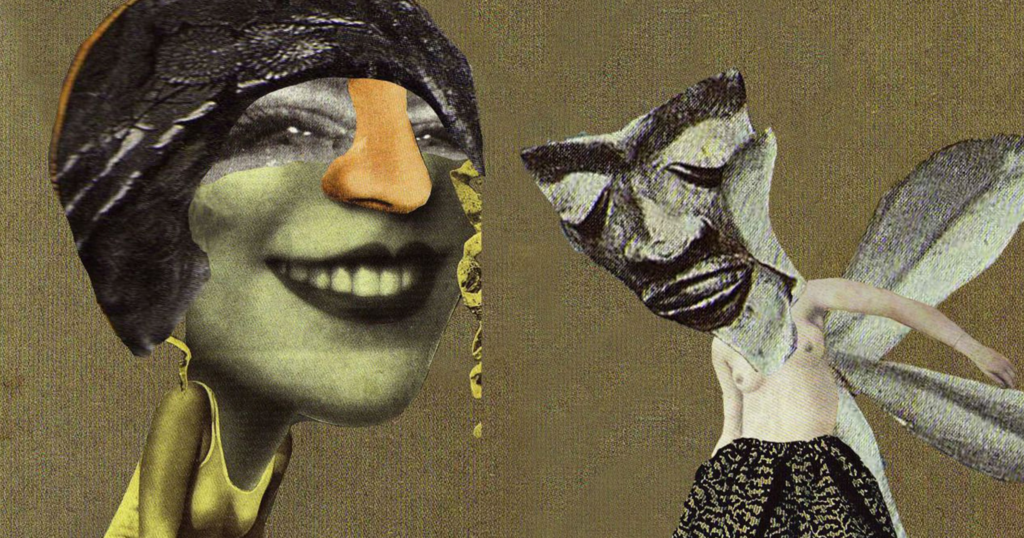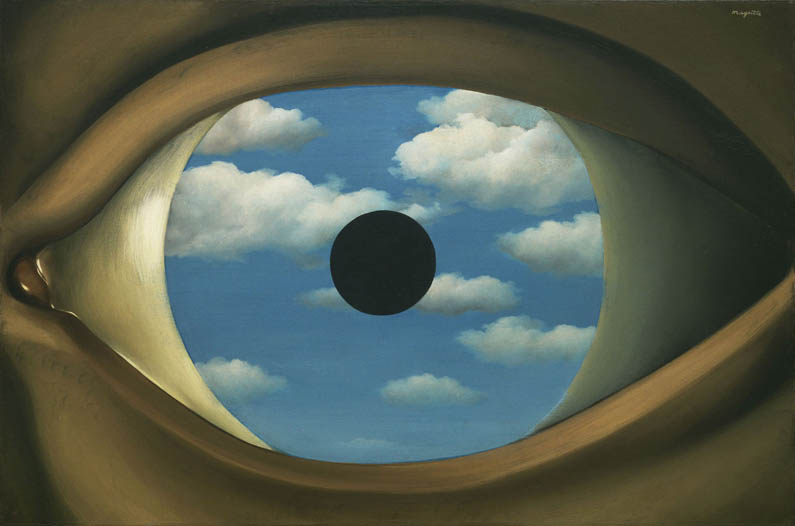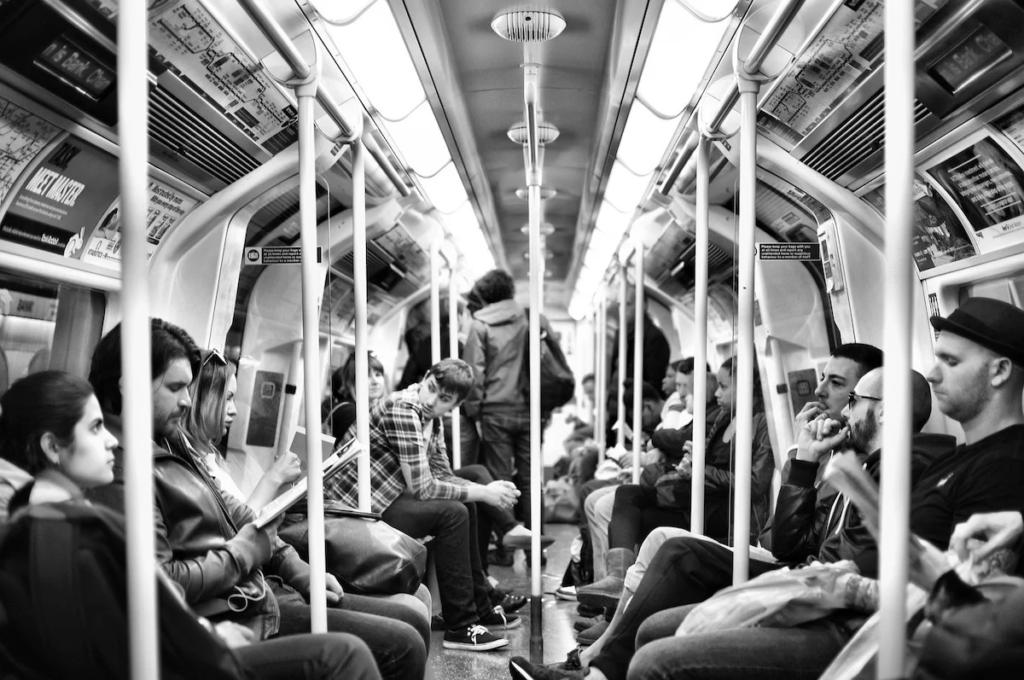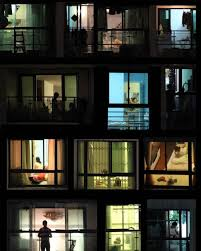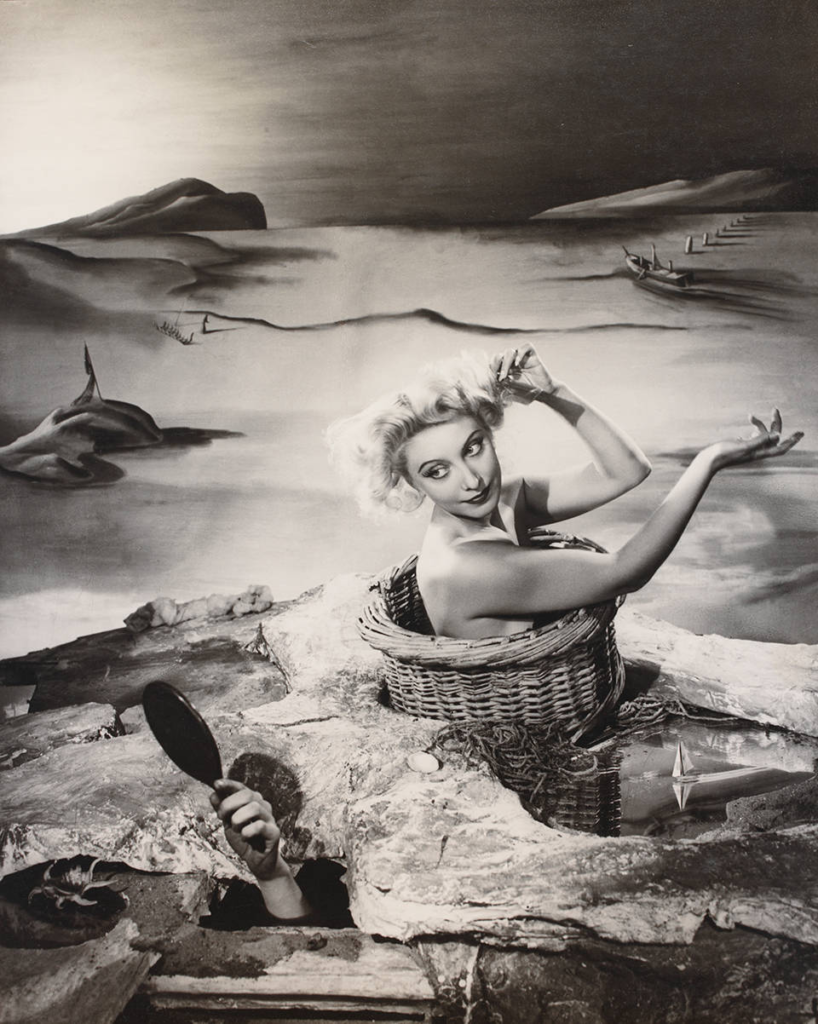
A Day Dream, Angus McBean, 1938, UK. Museum no. PH.25-1981. © Victoria and Albert Museum, London
www.npg.org.uk. (n.d.). Angus McBean Portraits – National Portrait Gallery. [online] Available at: https://www.npg.org.uk/business/publications/angus-mcbean-portraits.php
Angus McBean (1904-90) was one of the most extraordinary British photographers of the twentieth century. In a career that spanned the start of the Second World War through the birth of the ‘Swinging Sixties’ to the 1980s, he became the most prominent theatre photographer of his generation and, along with Cecil Beaton, the last of the British avant-garde studio photographers.
During the 1930s and 1940s, McBean developed Surrealist techniques, including the depiction of the actress Dorothy Dickson as a water lily. Yet his style kept pace with the times and by the 1950s and 1960s he was taking photographs of celebrities from Cliff Richard to Shirley Bassey. Arguably his most famous image is of the Beatles, leaning over the balcony at their recording studios, which was used on the album cover Please Please Me. His celebrated series of self-portraits, which he sent out as Christmas cards, capture his witty and eccentric personality, while his numerous photographic commissions in the 1980s – including his work with the pop singer David Sylvian – demonstrate his inventiveness and creativity.
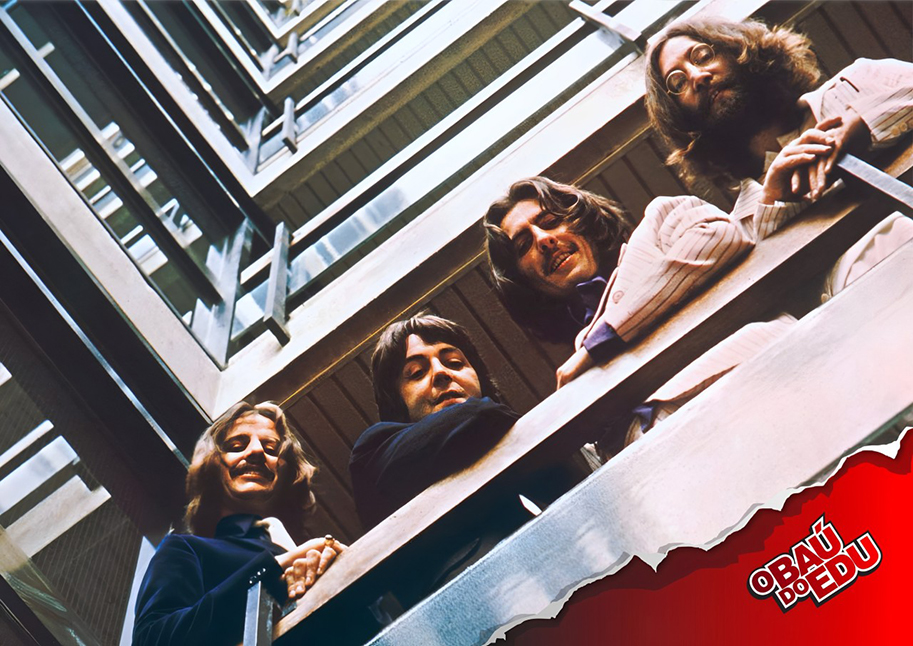
Barnebys.com. (2015). Surreal Glamour: The Photography of Angus McBean | Barnebys Magazine. [online] Available at: https://www.barnebys.com/blog/surreal-glamour-the-photography-of-angus-mcbean
Born in Wales in 1904, McBean loved cinema from a young age. It inspired him to buy his first camera at the age of 15, and he would practice on his family and friends. He moved to London in 1924, working for seven years for Liberty’s before beginning his career as a theatrical model and mask-maker, whilst still experimenting with photography on the side. An exhibition of his models and early photographs shown at the Private’s Den, a basement tea shop on Maddox Street in London, caught the eye of the society photographer Hugh Cecil , who offered him work.
Cecil’s connections led to introductions to the London theatrical world, and McBean was commissioned to design scenery and props for john Gielgud’s production of Richard of Bordeaux in 1933. However, his big break came when he was asked to make masks for Ivor Novello in an adaptation of Max Beerbohm’s The Happy Hypocrite. At Novello’s insistence, McBean took close-up portraits of the cast which appeared in all the leading reviews and launched his career as one of the leading theatre photographers of his age.
After a difficult war, McBean re-established his studio in London and created a new series of ‘Surrealist Portraiture’, incorporating clever theatrical tricks to create effects, but nevertheless, they were still straight photographs. Another assimilation with modern art of the period was his use of montage and collages, Ivor Novello appearing in 1947, crowded and leaning on his own writings, and Cecil Beaton swamped in his books, photographs and drawings whilst somewhat sinisterly holding a pair of long-bladed scissors, a reminder of Beaton’s cutting remarks.
en.wikipedia.org. (n.d.). Angus McBean. [online] Available at: https://en.wikipedia.org/wiki/Angus_McBean
In 1925, after his father’s early death from tuberculosis, contracted in the trenches during the First World War, McBean moved with his mother and younger sister Rowena to a three bedroomed cottage at 21 Lowfield Road, West Acton. For the next seven years he worked for Liberty’s department store in the antiques department learning restoration, while his personal life was spent in photography, mask-making and watching plays in the West End theatre. In 1932 he left Liberty’s and grew his distinctive beard to symbolise the fact that he would never be a wage-slave again.
McBean resultantly became one of the most significant portrait photographers of the 20th century, and was known as a photographer of celebrities. In the spring of 1942 his career was temporarily ruined when he was arrested in Bath for criminal acts of homosexuality. He was sentenced to four years in prison and was released in the autumn of 1944. After the Second World War, McBean was able to successfully resume his career.
In 1945, McBean set up a new studio in a bomb-damaged building in Endell Street, Covent Garde. He sold his Soho camera for £35, and bought a new half-plate Kodak View monorail camera to which he attached his trusted Zeiss lenses. McBean was commissioned first by the Stratford Memorial Theatre to photograph a production of Anthony and Cleopatra, and all his former clients quickly returned. Through the late 1940s and 50s he was the official photographer at Stratford, the Royal Opera House, Sadler’s wells, Glyndebourne, the Old Vic and at all the productions of H.M. Tennent, servicing the theatrical, musical and ballet star system.
Photo Analysis:
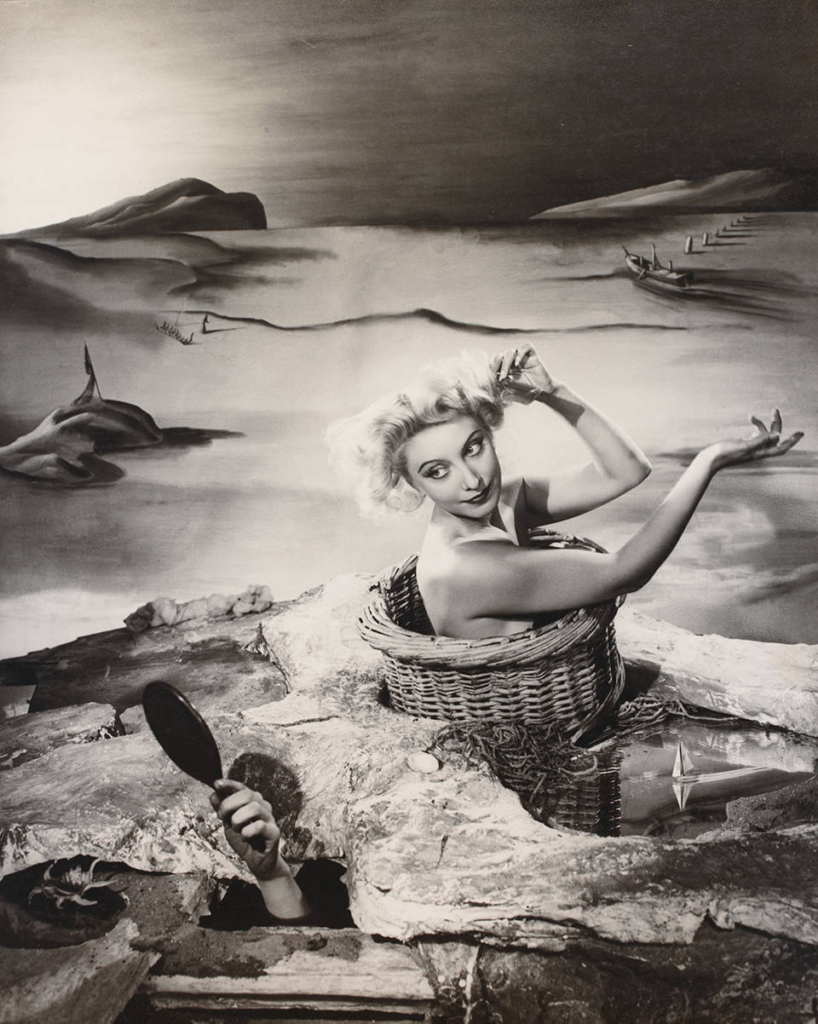
This montage is quite original, it’s clear that this was setup in a studio and nothing was really edited in. For example the lady is sat in a basket and isn’t added in by a computer, just like the hand holding a mirror supporting the women to see herself better. The background also seems to be painted on which makes the overall image look really original and different to other photos. I really like how this photo has a high contrast and is in black and white to avoid any type of colour to pop through and distract the audience. It is clear that the lady in the basket is looking at herself in the mirror held by a different hand, though this overall photo looks very unusual and it isn’t something that you would see everyday. I really like how this photo is original and doesn’t really have a lot of technology used to make this photo, I also really like the small detailing like the little boat in the water next to the lady. It almost gives the effect that the lady really is in water in a lake and is stuck in a basket quite unfazed and just looking at herself in the mirror. This image was produced by Angus McBean a surrealist artists, his work shows a good understanding of surrealism and how unusual it looks, the idea that surrealism is like a dream and produces something extraordinary. This photograph has loads of details added to help make this photo more unusual and different from what we see in the everyday world. For me i quite like how the background of the photo is painted and almost gives off a really peaceful and quiet vibe as the painting is very smooth and relaxing to look at whereas further down where the lady is presented the rocks tend to look very rough and beaten up, it adds a contrast to the photograph, a mixture of peace and war is added to make the audience feel like they are floating above reality and wondering what is present or not. There are really dark shades used in the image round the corner of objects to try and uplift them and make them more noticeable. this photograph is really well detailed and I really like how they haven’t added too much detail or too many random things as it would distract the audience and make the photo look too distracting and painful to look at. The artist has kept to a theme and added certain props that would fit in well with the photo. Such as the rope tied around the basket and in the painting there are small boats and fences along with mountains, there is almost a sense that the sun is setting as there is a beam of light coming form the low left side of the photograph. and the rest of the background seems to be quite dark and less uplifting. I really like that effect as if there wasn’t a background I would suggest that this photograph was produced in the day time as the rest of the photo looks quite light and vibrant but that’s the look surrealism gives, it throws the audience around to make them believe things that aren’t real. Overall this photograph is really well presented and shows the audience that surrealism is a mixture of the truth along with a few lies. That it’s a mixture of the subconscious mind and the reality we face everyday, our brains create a sense of reality with other factors effecting it.

